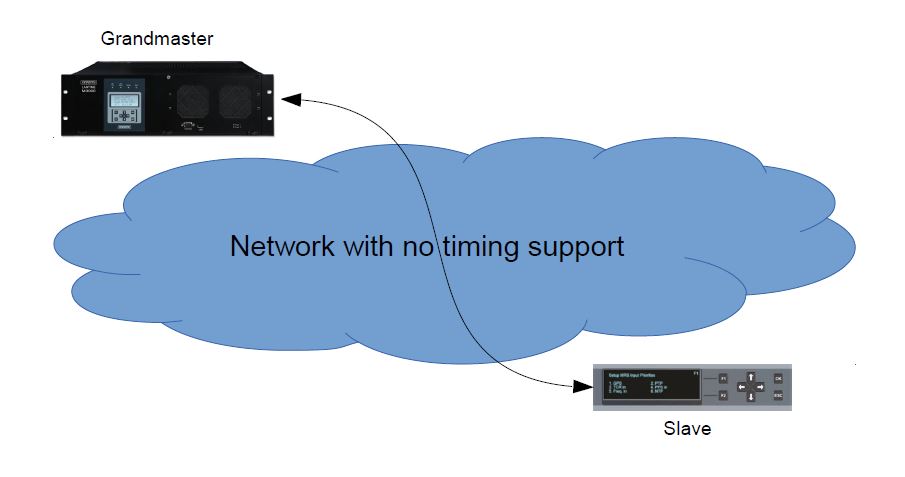Five Minute Facts About Packet Timing
By Doug Arnold.
In an earlier post I described how boundary clocks and transparent clocks correct for timing errors in the network between the PTP grandmaster and PTP slaves. But what do you do if you don’t have boundary clocks or transparent clocks? What if you have a bunch of switches and/or routers which have never heard of PTP? Fortunately you can still get precise time through the network, as long as it doesn’t have to go through too many nodes which queue messages.

Many applications require precise time transfer through a network with no support for timing in the switches and routers between a master clock and a slave clock
The International Telecommunication Union has developed a PTP profile for networks with no timing support. The ITU defined this profile for transferring frequency in timing networks. However the profile:
- Can transfer time precisely, as long as the network is not too large
- Is often used in applications other than telecommunications
What counts as a network which is not too large? The key here is network asymmetry. PTP assumes that the time for a sync message to go from the master to the slave, is exactly the same as the time for a delay request to go from the slave to the master. Any difference between these “forward” and “reverse” propagation delays shows up as an error when adjusting the time of the slave clock. In the case of telecom networks they were worried about networks the size of metropolitan area networks. That meant that there would long fiber optic cables with asymmetry due to forward and reverse PTP message traversing different fibers. They were also worried about traversing many routers, with large amounts of queuing. However if your application includes just a few Ethernet switches between master and slave in a local area network, then you can still get time transfer on the order of a microsecond. or maybe your network is larger, but your application only requires 100 microsecond precision. The ITU-T G.8265.1 PTP profile might be for you.
Consider the following example from the power industry. Time transfer in power substation has traditionally been implemented by sending serial timecodes over dedicated timing cables. However, grid operators are starting to replace this timing system with PTP, which has the advantage of operating over the existing data network. Generally this is accomplished using the IEEE C37.238 Power Profile. This profile calls for switches to be transparent clocks. However some grid operators are also looking at running the G.8265.1 telecom profile between substations. There are two reason to do this:
- The control (SCADA) system for the overall grid requires 1 ms precise timing.
- If a substation loses its source of time, usually a GPS receiver, it can get time from the nearest substation.

Substation clock with GPS fails over to nearby substation using Telecom profile GPS
There are many examples from other industries. Ask your technologist, if the telecom profile is right for you?
Excellent bit sized post answering an obvious question simply, thanks